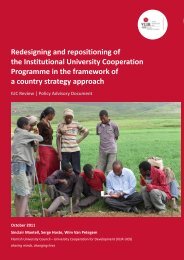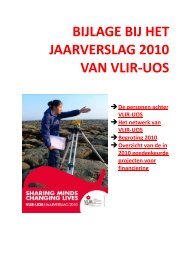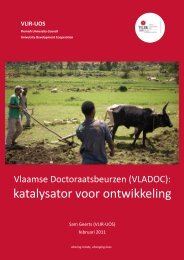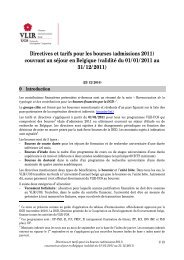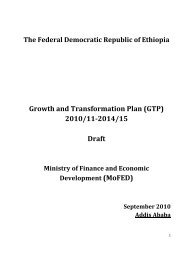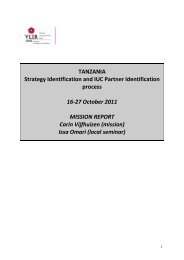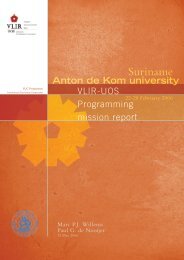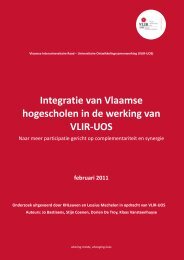Education Sector Development Program - VLIR-UOS
Education Sector Development Program - VLIR-UOS
Education Sector Development Program - VLIR-UOS
Create successful ePaper yourself
Turn your PDF publications into a flip-book with our unique Google optimized e-Paper software.
<strong>Education</strong> <strong>Sector</strong> <strong>Development</strong> <strong>Program</strong> IV<br />
Assumptions for cost<br />
❚<br />
❚<br />
❚<br />
❚<br />
❚<br />
❚<br />
❚<br />
Assumptions are made about inflation in 2008/2009 and 2009/10. All costs for the planning<br />
period are in 2010/11 prices.<br />
Average teacher salaries will increase in line with inflation.<br />
For textbooks, learning materials and school construction, targeted prices are indicated at<br />
the base year value. In the model, unit costs are incremented with inflation rate.<br />
School operating costs include an allowance for school maintenance and the school grant.<br />
20% of textbooks are to be replaced every year.<br />
Cost estimates have been added for some specific programs, as follows:<br />
• Adult education: cost of a two-year FAL course: 20 US$ per participant per year<br />
• School feeding program - Primary schools in six regions: 1290 schools in the program<br />
• Scholarships <strong>Program</strong> for 2% of Grade 9 & 10 students, at an average of 2000 Birr<br />
• Boarding facilities in secondary schools for 1% of students<br />
• ICT program: a cost estimate made by the relevant Process indicates a total cost over the fiveyear<br />
period of 2,341,780,260 billion birr.<br />
Cost estimates for higher education have been made outside of the model, by Ministry and<br />
university staff.<br />
Assumptions for financing<br />
Real GDP growth is estimated by MoFED as follows: 7% in 2010/11, 8% in 2011/12; 10.4% in 2012/13;<br />
10.6% in 2013/14; 10.9% in 2014/15. The shares of the National budget in the GDP and of the Federal and<br />
Regional budgets in the National Budget are kept constant at base year (2008/2009) levels. The shares<br />
of education in the federal and regional budgets, and the share of primary education in the regional<br />
budget are kept constant at the three-year average (2006/07-2008/2009). Hereunder are the base year<br />
figures:<br />
❚ % National budget / GDP Recurrent 9.1%<br />
Capital 10.6%<br />
❚ % Federal budget / National Recurrent 41.0%<br />
Capital 67.0%<br />
❚ % Regional budget / National Recurrent 59.0%<br />
Capital 33.0%<br />
❚ % <strong>Education</strong> / Federal Budget Recurrent 14.9%<br />
Capital 18.8%<br />
❚ % <strong>Education</strong> / Regional Budget Recurrent 35.2%<br />
Capital 9.2%<br />
❚ % Primary <strong>Education</strong> / Regional Budget Recurrent 64.5%<br />
Capital 46.6%<br />
110




